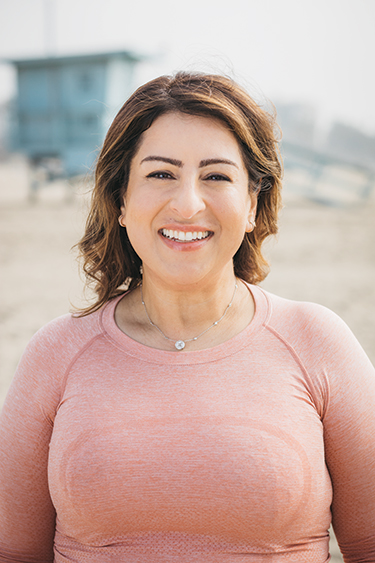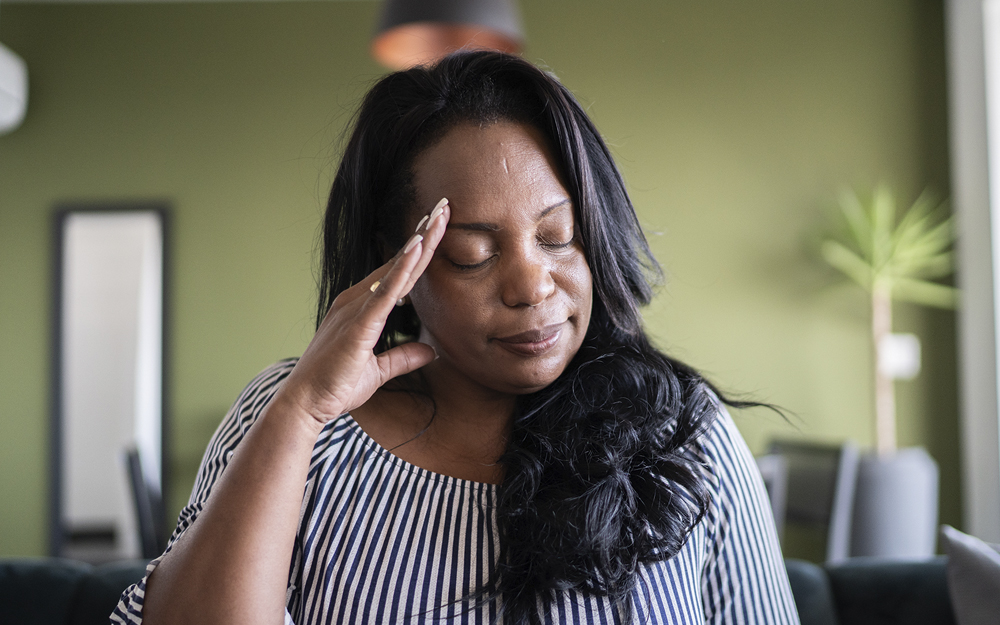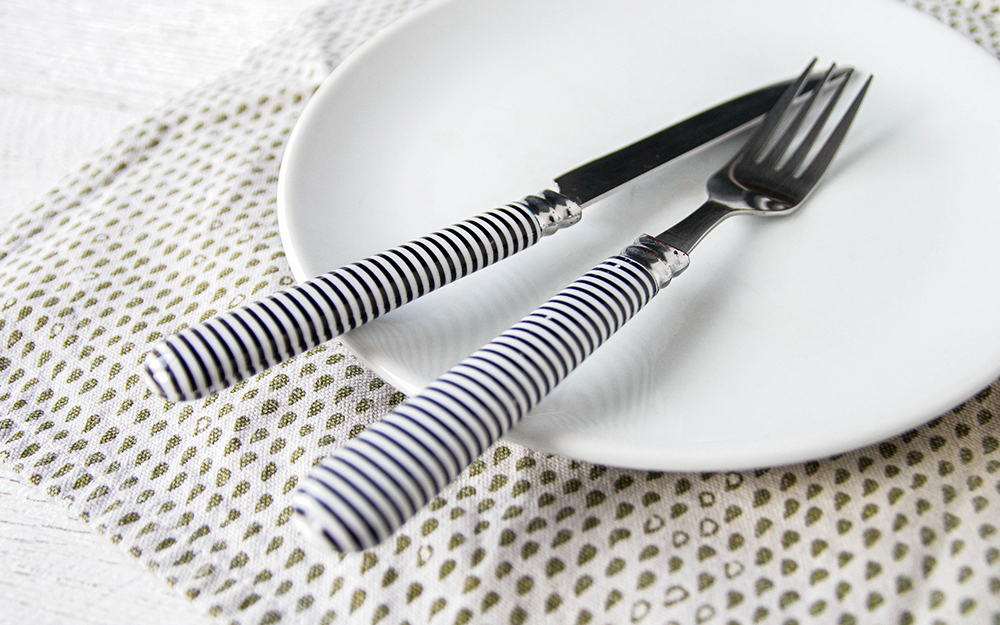More than Weight Loss: Patient and Doctor Team Up for Wellness Success
Date
March 2, 2022

Date
March 2, 2022
Credits
Medical providers featured in this article
In Brief
{{cta-block}}
When Caren Esmaeilzadeh talks about dropping 50 pounds, she rarely mentions what she lost in ounces, dress sizes or inches.
Instead, she emphasizes what she has gained: focus, mental clarity, more energy, better relationships, self-respect and improved health.
“I had accepted my body and all the changes brought about by my three pregnancies,” Esmaeilzadeh says. “It’s not about wanting to look good in a dress. It’s self-care—and that doesn’t just mean makeup and manicures. It’s doing better for myself so that who I am on the outside matches who I am on the inside.”
Three years ago, Esmaeilzadeh, 44, returned from a vacation with her husband at an all-inclusive resort. The hardworking mom of three rarely took much time to focus on herself, giving most of her energy to her family, so she appreciated the break. After days spent soaking in the sunshine, luxuriating in the surf and enjoying lush buffets and free-flowing beverages, she expected to feel great.
“When the plane landed, I felt so yucky,” she says. “I had so much inflammation, and I just felt tired.” A less relaxing trip to her longtime primary care physician, Violette Gray, MD, confirmed her worst fears: high blood pressure, prediabetes and the heaviest weight of her life. Gray encouraged her to change, giving her helpful advice and six months to improve her numbers. Otherwise, medications would be the most prudent route for protecting Esmaeilzadeh from stroke, diabetes and other risks. Those two trips started a journey of many small steps for Esmaeilzadeh. Bit by bit, she changed her life and inspired others—even her doctor—to do the same.
I had accepted my body and all the changes brought about by my three pregnancies. It’s not about wanting to look good in a dress. It’s self-care—and that doesn’t just mean makeup and manicures. It’s doing better for myself so that who I am on the outside matches who I am on the inside.”
Walking the Walk
According to the Centers for Disease Control and Prevention, more than 42% of American adults are obese. It’s a complex health issue influenced by many factors, including income and access to healthcare.
Esmaeilzadeh’s weight gain became an issue when she started having children 17 years ago, and her weight increase was a topic of discussion during her regular checkups with Gray.
Esmaeilzadeh had tried many diets and weight-loss plans. With glowing skin, glossy chestnut hair, a playful and fashion-forward sense of style, she embraced her body at any size. She still tried to lose weight, but often found herself turning to food for comfort and stress-relief.

“I would read books, join groups and try so hard to do what other people did, but it never worked for me,” she says. “I thought it was too difficult to even wrap my head around it.”
To help guide her, Gray suggested foods that Esmaeilzadeh could eliminate. She recommended intermittent fasting, which meant eating only during certain hours of the day.
“I was overwhelmed and felt like I was going to be drinking water and breathing air, and that would be it,” Esmaeilzadeh says. “But I didn’t want to have to take the medication.”
She tried limiting her eating to the hours between 10 a.m. and 6 p.m. However, during those hours, she found herself turning to food for comfort or mindlessly eating. She lost about 10 pounds but didn’t think it would be enough to make a difference. The six-month deadline approached, and she delayed her appointment.
Then, the COVID-19 pandemic hit. The claustrophobic conditions of quarantine, with kids learning from home and parents working from home, frequently sent Esmaeilzadeh outside for some mind clearing fresh air. A walk around the block became a push to walk 30 minutes at a time.
“I was just doing this to decrease my anxiety and be a better mom,” she says. “The more I walked, the less anxious I felt. I also found I didn’t want to eat as much.”
Soon, she headed to Santa Monica to walk on the beach. She started alternating walking and running. Intervals of running stretched into a mile, then 2 miles. Soon she was running 8 miles regularly.
A Daily Priority
Just as her running picked up, Esmaeilzadeh lost a dear friend to COVID-19. They’d talked about running together but never had the chance. “I was so deeply devastated,” she says. “The only time I felt like I could go on without my friend was when I was running. Even though I lost my friend, our friendship was essential to my progress.”
Running became a necessary outlet for her at least five times a week.
At first, her new routine was a tough adjustment for her family. Her two teenagers would call her constantly during her workouts. Resisting the impulse to give in to them, she addressed their issues on the phone or told them it could wait until she returned home.
“For the first time, I made myself a priority,” she says. “The more I ran, the more stamina I had. I started to miss it on days I couldn’t go.”
An Inspiration to Others

Several months into her running regimen, Esmaeilzadeh returned to Gray for a follow-up appointment.
“When she walked into the exam room,” Esmaeilzadeh says, “I could see the shock on her face and in her eyes, and she literally started to tear up. It wasn’t until then that I realized what a big change I’d made.”
She had lost about 30 pounds. Her blood pressure was in the healthy range and signs of prediabetes had vanished from her blood work. Esmaeilzadeh’s running habit and weight loss impressed Gray—and so did her obvious happiness.
“I spend a lot of time talking to my patients about diet and exercise, but obviously, I struggle with my own health and habits just like everyone else,” Gray says. “I’ve never been an athlete.”
Newly inspired, Gray made a 7 a.m. appointment with herself to walk with her German shepherd, Lady, four times per week.
She’s gradually increased the intensity of their daily activity, and now they jog more than 3 miles together.
“Caren really inspired me to do this,” she says. “She started out like me, and now she’s training for a marathon.”
Esmaeilzadeh’s most memorable race so far was with her children. Her husband, Kasha, stayed with their youngest daughter, Kylie, 10, while she headed down to the beach with Sophie, 17, and Evan, 15. They started out jogging together on the sand, and Evan was the fastest at first. But a mile or so in, the teenagers were unable to keep up with their mom.
“I know I gained a few points in their eyes,” she says.
Kasha started running with her, too.
The family recently took another vacation together. This time they went to Hawaii. Instead of luaus, their plans revolved around outdoor adventuring. They hiked Diamond Head, a trail circling a 300,000-year-old crater with breathtaking views of the Pacific Ocean.
“I can’t believe that when I get ready for vacation the first thing I pack is my running shoes,” she says. “This is my life now. The motivation is showing my children that we need to really love who we are. The motivation is to be a better mom, better wife and better friend. I like that. I like that very much.”
{{column-start}}
Measurable Goals
Letting go of the idea of a perfect weight and focusing on healthier habits can be an effective path to weight loss, Gray says. “You don’t have to get down to a ‘Hollywood’ weight to reap the rewards of exercise and cleaner eating,” she says.
{{column-end}}
{{column-start}}
Start With One Minute
Esmaeilzadeh is training for a marathon, but she started with a walk around the block. Walking in place for just one minute is also a reasonable starting goal.
{{column-end}}
{{column-start}}
Add One Serving at a Time
Rather than adjusting all your eating habits at once, begin with one thing, like adding a serving of vegetables every day.
{{column-end}}
{{column-start}}
Shoot for 10%
Losing 10% of your body weight is often adequate to decrease blood pressure, improve blood sugar levels and increase overall health.
{{column-end}}
{{column-start}}
Focus on Feelings
Happier mood, less anxiety, more energy and increased confidence motivated Esmaeilzadeh to reach for her running shoes in a way the scale never did.
{{column-end}}
{{column-start}}
Have Fun
Exercise isn’t punishment, Gray says. Bring a friend, window shop while you walk, listen to your favorite music. If it’s fun, you’ll keep doing it.
{{column-end}}
{{providers}}
Violette Gray, MD
Doctors influence their patients—and patients do the same for their doctors, says Violette Gray, MD.
“They inspire us, and they’re such a big part of our lives,” she says.
Gray graduated from the Keck School of Medicine of USC, where she also completed her internship and residency, and then went on to a primary care fellowship at Cedars-Sinai.
She’s been a primary care physician for more than 16 years. She has some patients who have been seeing her since the beginning of her career—Esmaeilzadeh among them.
“I chose primary care because I wanted to connect with people and make a difference in their lives in a meaningful way,” Gray says. “It’s really exceeded my expectations.”
She is one of the leaders of Cedars-Sinai’s primary care transformation effort, working with other physicians to improve patient experiences and outcomes.






